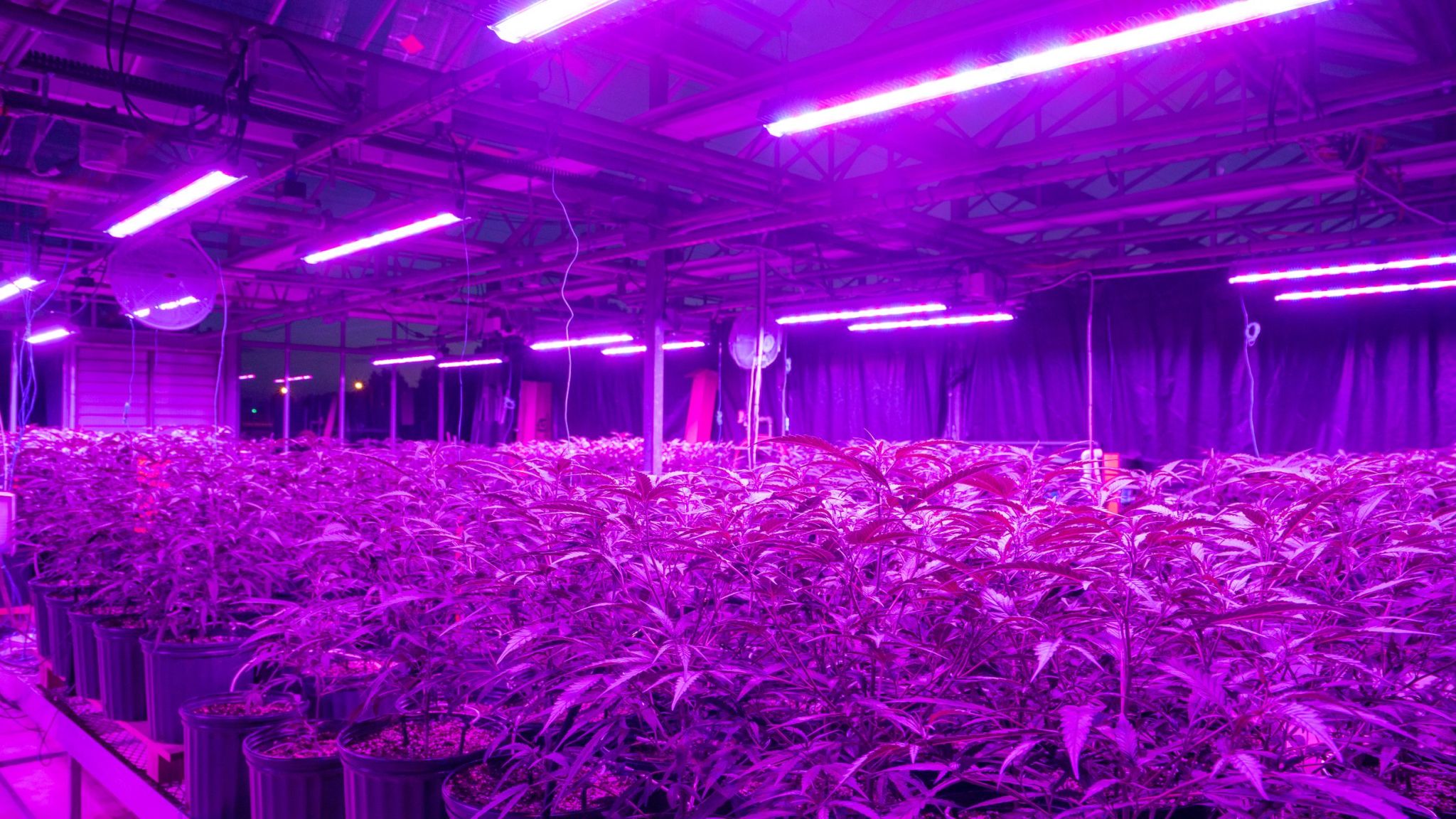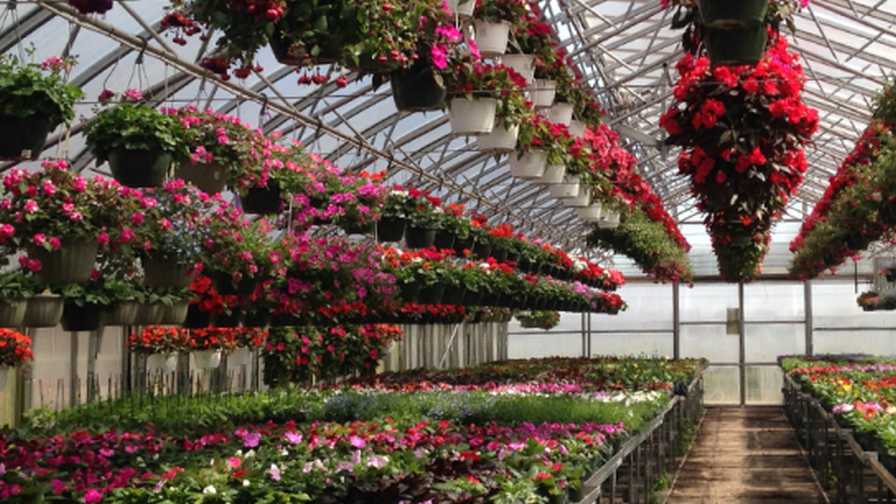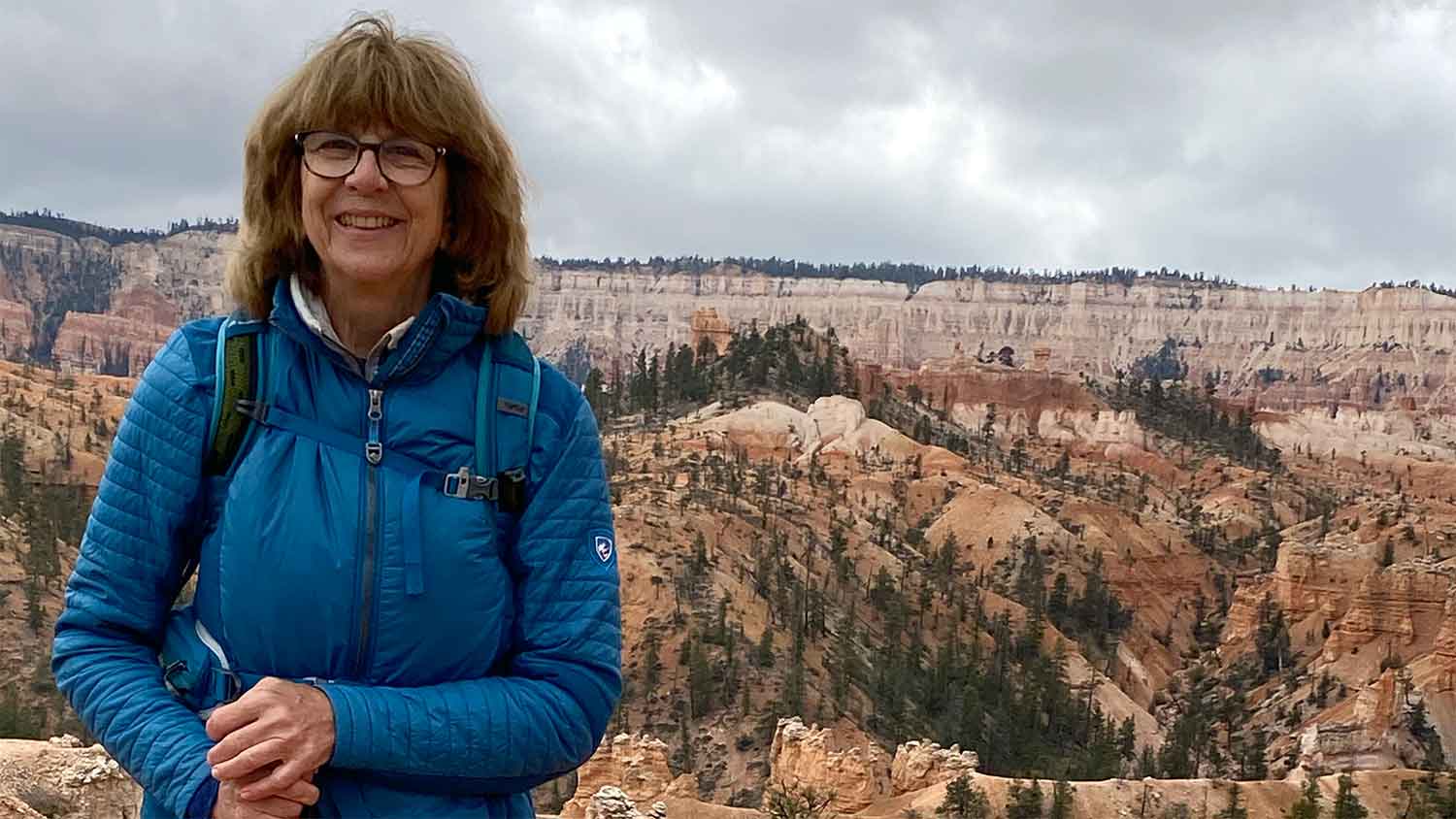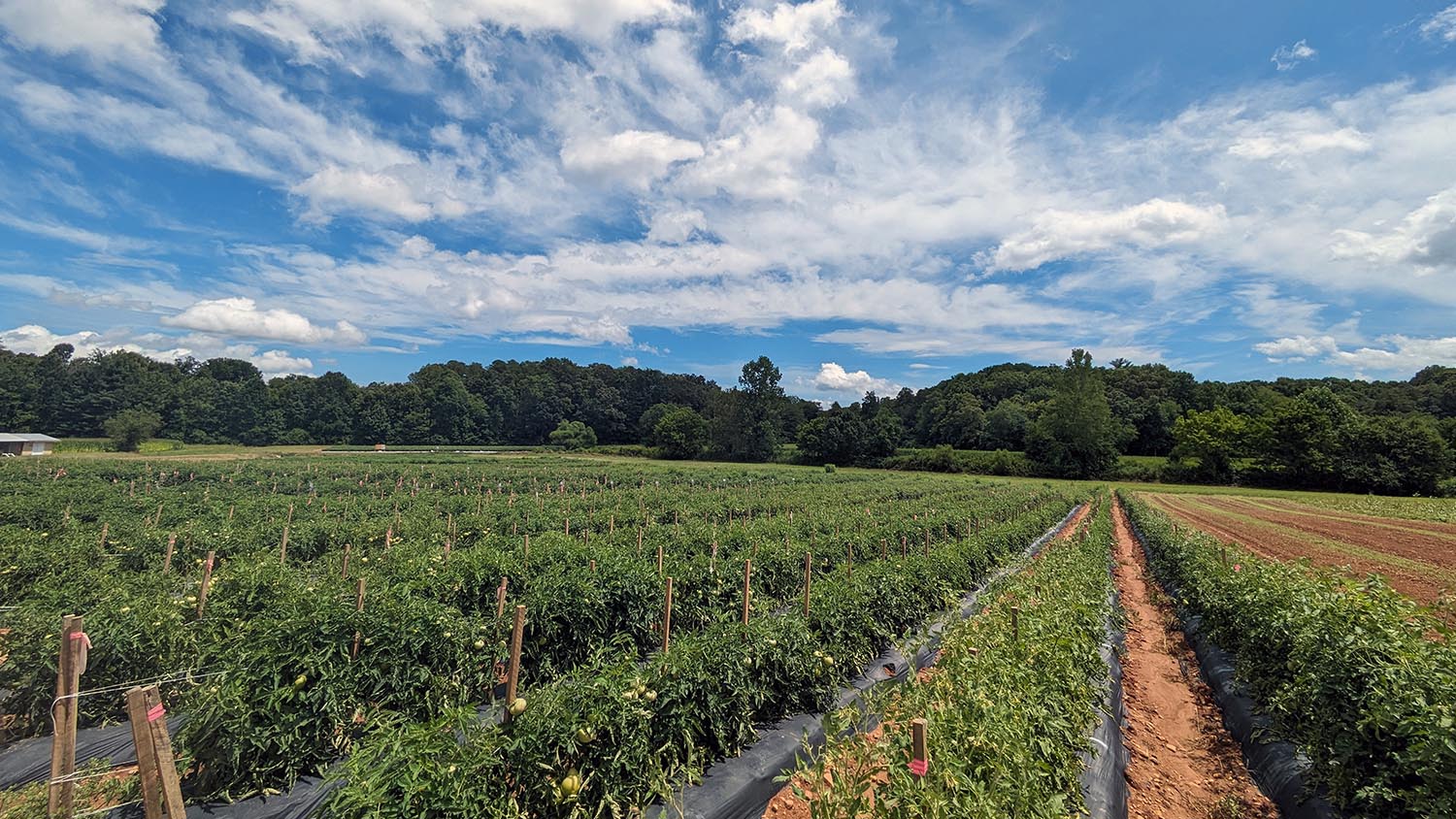American Society for Horticultural Science Interest Groups Award Department Research

The American Society for Horticultural Science annual conference was held July 30 through August 3 in Chicago, Illinois. The conference provides a platform to unify academia, extension, government, industry, researchers and students in a rich environment for new plant science concepts and techniques. While NC State’s Department of Horticulture Science was awarded in a series of interest groups, the graduate research in controlled environmental horticulture and plant growth regulation beaconed.
Master Student Oral Competition
First Place: Sam Humphrey (MS, advised by Ricardo Hernandez)
Space Agriculture Laboratory Analysis Database (SALAD) Software to Aid Researchers
Food production is a crucial component of closed-loop human life support systems, thus advancements in food production research are essential to human space exploration. However, the existing space crop publications are dispersed across many journals, and can be difficult to find and access. To enhance the existing space crop production research and to increase its accessibility, our team developed an open-access graph (network) database tool. This software organizes literature by experimental design, hardware and research topic, and includes 3D network visualization and advanced search functions. This tool could enable researchers to easily identify gaps in knowledge and generate novel experiment ideas, and would increase visibility of published work. The SALAD team selects and analyzes relevant peer-reviewed publications, then manually enters information into the database including the authors’ names, experiment start date, plant species, plant developmental stage, environmental conditions (spaceflight, ground-control, clinostat, etc.), growth chamber hardware, research objectives and key findings. The database is published and free to access online, and it is continually being expanded and improved. This tool could benefit researchers in astrobotany and other fields, especially those who study controlled environment agriculture. This software will use outreach and community engagement to aid astrobotany research and fill the gaps that are standing in the way of establishing sustainable colonies on the Moon or Mars.
Controlled Environment Horticulture Graduate Students Oral Research Competition
The Controlled Environment Professional Interest group had 36 graduate student competitors in six oral sessions. All NC State competitors were ranked in the top five, with a tie for first place.
First Place: Xiaonan Shi (PhD; advised by Ricardo Hernandez)
Optimizing Micropropagation of Cannabis sativa L. By Implementing Photoautotrophic Method
Micropropagation using nodal segments is a common practice for multiplication of clean plant materials in Cannabis sativa L. Multiplication is achieved by repeating the process of shoot initiation from nodal segments, shoot elongation, and axillary node harvest. Accelerating shoot elongation and increasing axillary node development could speed multiplication process. However, compared to ex vitro condition, the environment of micropropagation in vitro has limited air exchange and relatively low light intensity, potentially hindering the photosynthesis of the nodal explants. Additionally, acclimation can be challenging for plants as the significant environmental difference between in vitro and ex vitro. One possible approach to improve Cannabis sativa micropropagation is to implement photoautotrophic tissue culture, where the source of carbohydrate for explants solely relies on photosynthesis instead of exogenous sugar supply. The objective is to develop an optimized photoautotrophic system for Cannabis sativa micropropagation and to investigate the difference of explant growth between conventional tissue culture and photoautotrophic culture with various air change rates. The hypotheses of this project are that 1) nodal explants possess an adequate photosynthetic capacity to maintain appropriate explant growth; 2) increasing air change rate could improve explant growth in photoautotrophic culture as well as conventional culture. Nodal explants with 3 – 4 expanded leaves from conventional tissue culture were sub-cultured to sugar-based medium and sugar-free medium (rockwool substrate with DKW basal salt) under four air change rates: 0.5, 4.1, 7.9, 14.5 h-1. Environmental conditions were maintained at 100 µmol m-2 s-1 PPFD of white LEDs (15% B, 38% G, 47% R light spectrum), 18/6 h photoperiod, 25 C°, and 70% RH. Explants were evaluated after 28 days of growth. Explants successfully grew in photoautotrophic environment and responded to rising air change rate with linearly increasing shoot biomass and the number of nodes. Photoautotrophic culture also promoted rooting of the explants. Furthermore, increasing air change rate increased root biomass in photoautotrophic culture. However, the current settings of conventional tissue culture were not ideal for higher air change rate, given that medium was severely dried at the end of the experiment and the explants showed reduction of shoot biomass and the number of nodes at the highest air change rate of 14.5 h-1.
First Place: Sam Humphrey (MS; advised by Ricardo Hernandez)
Rooting Efficacy of Different Size Strawberry Tips in a Controlled Environment
Strawberry propagation relies on the production of clonal “tips” from stock plants, where stock plants develop runners (stolons) and each runner produces several tips of different sizes and maturity levels. Frequent harvests of tips is the industry standard, but recent research has demonstrated that efficiency (tips/stock plant) can be improved by harvesting late in stolon development (63 days of development yields 102 tips/plant) (Shi, 2021). However, the size of these tips varies greatly, and the rooting capabilities of smaller tips are unknown. The objective of this study was to compare the rooting success rate of four tip sizes and determine whether small and very small tips are capable of rooting. The hypothesis is that small and very small strawberry tips are suitable for propagation. Strawberry (Fragaria × ananassa Duch., ‘Monterey’) tips were categorized as large (L), medium (M), small (SM), or very small (VSM), based on their number of root nodules (L, 22-54; M, 14-20; SM, 7-12; VSM, 1-6) and crown diameter at planting. All tips were transplanted into a controlled environment growth chamber and conditions were maintained at 25 °C temperature, 80 μmol m-2 s-1 photosynthetic photon flux density, 18-h photoperiod, and 95% relative humidity. At 14d, 100% of the evaluated tips had successfully developed roots. Tips were harvested at 26 days and 98% of all tips had well-developed roots. Tips’ physiological (chlorophyll content, photosynthetic rate) and morphological responses (crown diameter, leaf area, leaf number, root and shoot length, fresh mass, and dry mass) were evaluated. Root growth data followed treatment sizes, with the largest average root fresh mass recorded for the L treatment (2.71 g), and the smallest for the VSM treatment (0.34 g). This research confirms that tips of small sizes can root successfully in a short time (<20 d). Nurseries can use smaller tip sizes and longer harvesting intervals to increase propagation efficacy.
Honorable Mention: Cristian Collado (PhD; advised by Ricardo Hernandez)
Effect of Carbon Dioxide Enrichment on the Rooting of Cannabis Sativa Cuttings
Asexual propagation using cuttings is the primary strategy to maintain chemotypic uniformities in indoor and outdoor productions of Cannabis sativa L. Previous research on the rooting of cuttings showed that increasing light intensity (50-300μmol m-2s-1) increased the root growth. However, the impact of CO2 enrichment on the rooting of Cannabis cuttings is unknown. This research aimed to quantify the effects of CO2 enrichment on the root growth of the cuttings of four cultivars: ‘Suver haze’,‘Luck’, ‘Sunset’, and ‘Super sour space candy’ (SSSC). Mother plants were grown in a greenhouse under long days (18 h) and ambient CO2 levels, and their cuttings were rooted for 14 days under CO2 levels (μmol∙mol-1) of 464 ± 4, 1041 ± 26, and 1579 ±12 (average ± SD). In the propagation chambers, the photoperiod, PPFD, and day and night temperatures were maintained at 18 h,200 ± 1 μmol m-2s-1, 27.1 ± 0.2 °C, and 24.1 ± 0.1 °C, respectively. Relative humidity was initially maintained for four days at 99.8 ±0.1 % and slowly decreased to 92.0 ± 0.9 % by the end of the rooting period (day 14). The cuttings before rooting had two to three leaves and were four inches in height. After 14 days, root growth and shoot morphological and physiological responses were measured. Increasing the CO2 levels increased root biomass linearly for all cultivars as well as the percent of cuttings with well-developed roots (plugs ready to transplant). In addition, the root: shoot ratio increased linearly with CO enrichment for all the cultivars. However, the cultivar ‘Suver haze’ showed a significative higher root growth rate than the other three cultivars; the root growth was 71, 33, 26, and 13% greater under 1579 μmol mol than 464 μmol mol for ‘Suver haze’, ‘Luck’,‘ Sunset’ and ‘SSSC’, respectively. Therefore, CO enrichment in Cannabis rooting systems can increase the root growth, number of plants for transplant, and expedite the rooting period; however, responses are cultivar specific.
Honorable Mention: Kyle A Freedman (PhD; advised by Mark Hoffmann)
Precise Indoor Vine Conditioning: Impact of Supplemental Light Intensity on the Physiology of ‘Traminette’ and ‘Concord’ Grapevines
The grape and wine industry is one of the most economically impactful horticultural crop industries in the United States. However, perennial fruits, such as grapes, take up to five years to produce harvestable yields and require high up-front costs. This is true especially for East Coast viticulture, with disease pressure and climate challenges frequently leading to increased management costs and early vine decline. Prior research has shown that high light intensity and temperature can increase grapevine flowering and thus potential yield. Advances in Controlled Environment Agriculture (CEA) and more efficient lighting technologies such as Light Emitting Diodes (LED) can be utilized to condition young grapevine transplants for increased yields. We hypothesize that such conditioned green grapevine transplants could be grown to a full crop in the year of planting, potentially being used as starter plants or even in annual systems. This could eventually lead to cost savings in vineyard operations. While research on such systems is still in its infancy, potential benefits could entail reduced establishment costs for growers, greater flexibility in site-specific cultivar selection and reduced risk of long-term systemic grapevine diseases. Here, we investigated the impact of supplemental light intensities on growth, development and fruitfulness of the grapevine cultivars Concord and Traminette. Vines were grown in a controlled environment greenhouse under three daily light integral (DLI) treatments: 8.8, 28.7, and 48.9 mol m-2d-1 applying 7.7, 300 and 604 μmol m-2 s-1 photosynthetic photon flux density (PPFD) of supplemental LED light respectively. Temperature was maintained at 25.6°C ± 0.42°C (24-hour average). Our results showed that growth parameters such as net photosynthetic rate were greater at 604 μmol m-2s-1 PPFD for Traminette and 300 μmol m-2 s-1 for Concord. Bud fruitfulness using microscopic dissection showed no signififcance for Traminette while field cluster counts were greatest at 300 μmol m-2 s-1. Our results indicate that grapevines respond to conditioning using supplemental light intensity with increased growth, potentially leading to higher yields.
Plant growth regulation (PGR) graduate student oral research competition
Third Place: James Larson (PhD; advised by Tom Kon)
Fruit Xylem Functionality and Susceptibility to Preharvest Fruit Drop
Aminoethoxyvinylglycine (AVG) – an ethylene biosynthesis inhibitor – and naphthalene acetic acid (NAA) – a synthetic auxin – are widely used to limit preharvest drop (PFD) of apple (Malus x domestica L. Borkh). In 2020 and 2021, the relationship between xylem functionality and PFD was examined in ‘Red Delicious’ by applying AVG (132 ppm), NAA (10 ppm), and ethephon (150 ppm in 2020 and 200 ppm in 2021) – an ethylene inducing compound – two weeks before harvest to create a range of PFD potential. Xylem functionality was assessed using an acid fuchsin dye infiltration method. In both years, ethylene treated fruit did not have increased PFD compared to the untreated control, but AVG treated fruit did decrease PFD. NAA treated fruit had an intermediate level of PFD compared the untreated control and AVG in 2020, but had no difference between the untreated control in 2021. Across all treatments, there was an inverse-exponential relationship (second-order polynomial regression) between xylem functionality and cumulative PFD in both years (r2=0.493, p<0.001 in 2020; r2=0.544, p<0.001 in 2021). AVG treated fruit lost xylem functionality throughout the measurement period but never experienced significant PFD. The role of ethylene biosynthesis/receptor, cell softening, auxin transport, and aquaporins in the fruit pedicel and cortex will be discussed to determine if loss of xylem functionality is a true indicator of PFD.
Additional Horticultural Science Awards
- Dilip Panthee recipient of the Vegetable Breeding Award for Excellence.
- Ashley Troth received the ASHS Extension Division Education Materials Award for Introduction to Ecology and Ecosystem Concepts
- First Place: John Nix is the recipient of The Paul Thomas Pi Alpha Xi Photo Contest for ‘Flowers at Night”
- First Place: John Nix is the recipient of The Paul Thomas Pi Alpha Xi Photo Contest for ‘Photomicrography”
Are you interested in studying horticulture?
Horticultural Science provides a hands-on academic path that provides real-world benefits and applications. Explore our undergraduate and graduate programs to learn from expert faculty and have career-focused experiences.
Connecting students with opportunities is part of how we advance plants.
Get the latest Horticultural Science News
Sign up to receive monthly news and updates from the Department of Horticultural Science straight to your inbox.


